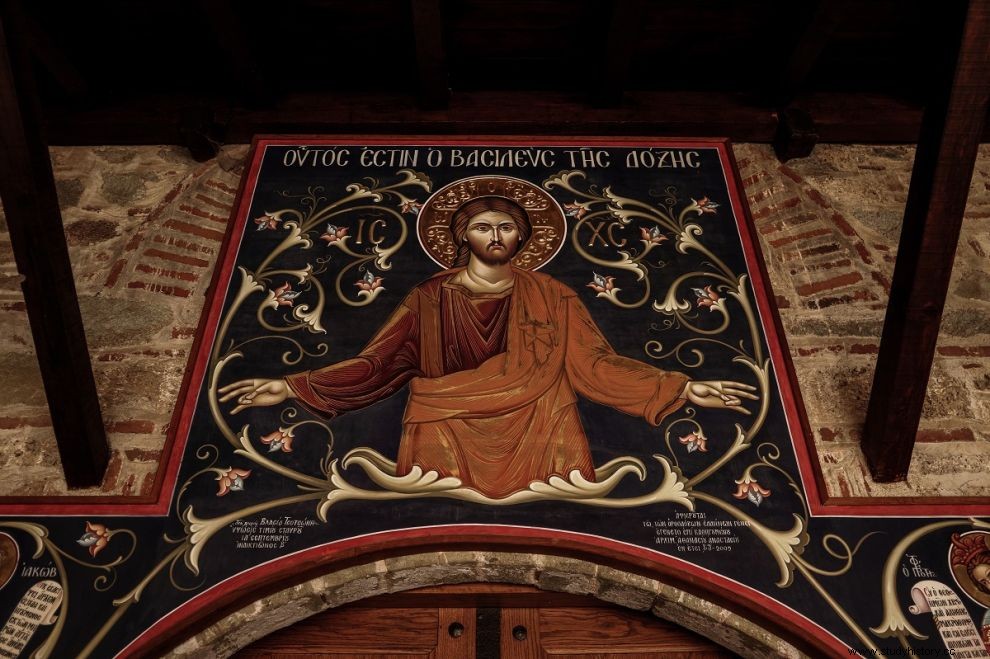In the thousand-year history of Byzantium, there were no prisons, only dungeons for temporary detention, where the guilty lived until they were tried. The punishment - for punishment or reason - was usually carried out by the executioners, who if you were lucky and didn't cut off your whole head, then they removed another limb.
But apart from mutilation, the most common punishments were monetary fines - naturally -, confiscation of property and forced confinement in a monastery.
The church functioned as an asylum, reminiscent of the holy temples of antiquity. If, for example, someone murdered and then fled to a monastery, the state authority could not touch him. But he was forced to continue his life inside the monastery, losing his property. If indeed the murder he had committed was premeditated, then he was forced to embrace the solitary life forever.
It is worth seeing separately, however, how impeachment, corporal punishments and executions were applied in the empire but also evolved over time.
Broadcast
In Byzantium there were also "moral declines". For example, those arrested for arson, theft, adultery, or other crimes, before being sentenced by law, were publicly paraded.
In what way; First they took the culprit and shaved him, then blackened his face with ashes and, after dressing him in rags, put him upside down on a donkey so that he could see and hold his tail. He was then paraded through the streets of the city, with people gathering to spit in his face and throw dirt at him, or even stone him. The purpose above all was to ridicule the culprit.
In fact, through this process the phrase "they made him a conch shell" came out. You see, when pedophiles, thieves, "choosing virgins", deserters, etc. were paraded, there was a special announcer, the "platsario", who preached the crime in the streets, as an example. So, in order to be heard as loud as possible, the trumpeter used a bugino, that is, a trumpet made of horn.
Severe corporal punishment
Punishments for thieves were correspondingly harsh. When someone was caught stealing, the first thing they did to him was to brand his forehead forever with a red-hot iron. If he stole again in the future, then he faced the possibility of having his arm or leg amputated.
Adulterers and adulteresses were given the penalty of nose-cutting, that is, their noses were cut off, and then they were banished - not the other way around as was customary for the rest. For other misdemeanors, however, such as desertion from the army, even harsher penalties were imposed, such as blindness.
And because the law accepted "an eye for an eye", adulterers risked losing their manhood.
Very often the part of the body with which it was performed was mutilated, for example for the offense of perjury, the tongue was cut out, for sex with animals, the male mole was cut off.
Also very common was blindness as a punishment for crimes against imperial power such as conspiracy.
Caning and whipping was also very common, which was usually harsher on slaves than on free people. Very often it was a combined punishment and went hand in hand with mutilation.

Thana political penalty
Roman law provided for extremes such as the very often attributed death sentences, which were finally limited "to the most charitable" by Byzantine law and Leo III with the Election. Until then, the death penalty was the order of the day and was carried out by beheading the prisoner either with a scalpel or a sword. Because for some crimes the magnitude of the punishment could not be precisely defined, this was left to the judgment of the respective judge, with the result that they were led to death for any crime, depending on the appetites of the latter.
We should note that the well-known "capital punishment" did not always mean "death" but also meant other punishments, such as "metallism", i.e. the sentence to forced labor in mines and mining or even the severe form of exile.
As we said, the law of the Election limited the extremes and arbitrariness of each judge, determining the type and amount of punishment for each act.
Thus, it replaced the death penalty in many criminal acts, except for arson and robbery after murder, where the punishment remained unchanged. That is, if someone set a fire in the city then he was burned alive at the stake and if he killed in order to rob his victim, then the gallows awaited him.
